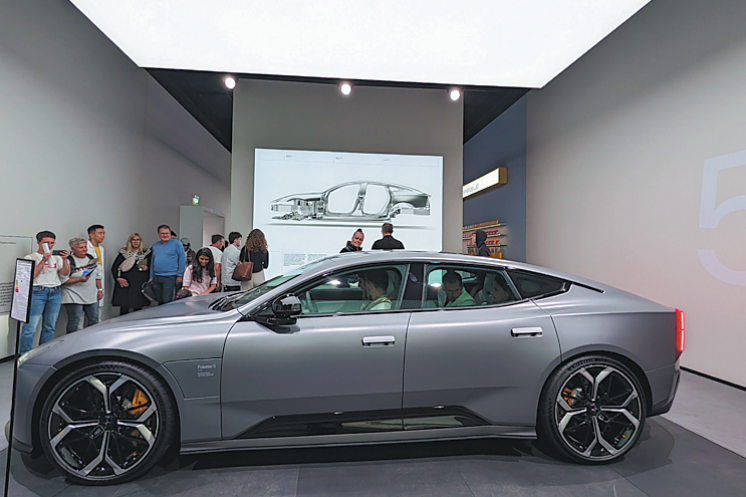Natural assets


China is showing that going green brings prosperity
In August 2005, President Xi Jinping, then Party secretary of Zhejiang province, went to the small, beautiful, hillside town of Anji and put forward the famous concept "lucid waters and lush mountains are as invaluable as gold and silver".It means that we need to protect the nature because it is invaluable, but it also means that there are huge opportunities for jobs, profit and economic development coming from environment action.
This iconic concept marks a watershed in China's history of development, and has become a new development paradigm for the 21st century. The earlier development logic ran as follows: in order to grow the economy and combat poverty, pollution was inevitable as there was no alternative to coal to provide energy. In 2005, China's focus was on economic growth. Now, the country's focus is on high quality growth. The shift away from coal has triggered a leap forward from grey growth to green growth.
In traditional manufacturing, China and other developing countries have few global brands. No Chinese vehicle manufacturer is as well known in the world as Toyota, for example. For latecomers, it is very hard to dislodge an existing brand with a similar product. To face the challenge, China adopted smart industrial policies to leapfrog into the electric vehicle market. This has been a win-win solution, not only creating jobs and prosperity in China, but also protecting the environment.
It is a story of success beyond all expectations. BYD is now the biggest electric vehicle company in the world. In the first quarter of this year, China surpassed Japan to become the largest car-exporting nation in the world. Ten different Chinese brands, such as XPeng, Nio and Geely, compete for top positions. Over 60 percent of all electric vehicles last year were made in China.
In April, Chinese brands took the spotlight at the Shanghai auto show. The US, Japanese and European carmakers were flabbergasted to see how far ahead Chinese companies were on electric cars, from batteries, design, to technologies and performance.
China's leading position is not limited to electric cars and the country also takes a lead in some renewable technologies. Longi headquartered in Xi'an is now the world's largest manufacturer of monocrystalline silicon photovoltaic products. The China Three Gorges Corporation is the global leader in the development of hydropower. Envision Energy ranks as one of the world's largest wind turbine companies. CATL has led the way in lithium battery making.
This green development push has created jobs and interestingly, it has boosted employment in many smaller and less known Chinese cities. For instance, CATL has its headquarters in Ningde, Fujian province. Tsingshan, the nickel giant, is based in Wenzhou, Zhejiang province. The lithium leader, Ganfeng, is seated in Xinyu, Jiangxi province. Envision Energy is headquartered in Jiangyin, Jiangsu province. The renewable energy sector has been contributing more and more to the country's employment, and China now has the world's biggest market for green energy jobs. Green creates jobs. Green is gold. Interestingly, India is trying to do exactly the same as China.
Prime Minister Narendra Modi is launching green industrial missions for green hydrogen, electric batteries, solar panels and more. He is using the state to frame the market green. The ambition is double: going green and providing jobs. Modi has also launched a "Make it in India" initiative to give a boost to Indian entrepreneurship and make sure that jobs are created domestically.
Ola, the Didi of India, recently set up a beautiful electric scooter factory in the state of Tamil Nadu. Promised to be the world's largest electric vehicle hub, Ola Future Factory is green, clean and modern. I was taken aback when visiting, noticing surprisingly, it is an all-women factory to showcase what Indian women can achieve. By going green India can capture markets and provide jobs for a young and ambitious population.
China and India have huge advantages over most other developing nations. China and India are unified markets with super large economies and populations. While there are 54 states in Africa with a combined population a bit smaller than India or China, most of them are small and isolated markets. It is barrier-free to make a product in Guangdong, South China and sell it easily in Inner Mongolia autonomous region, Northwest China, without levies or customs. The same goes in India. However, in Africa, a wide range of barriers make it hard for any regional trade. Intra-African trade is still minuscule.
The demand from poorer nations in the climate talks for repair of loss and damage caused by developed nations is a just one.
The developing world will do well by following the lead of the two giants. A wise choice is to see the opportunities of climate more than the costs. That is good advice to Europe and North America as well.
One response from the West to the huge green advances of China has been the Inflation Reduction Act in the United States. The program will provide massive subsidies for green products such as batteries and electric vehicles, green hydrogen or renewable energies as long as they are produced in the US. So, while it will be a shot in the arm for green development in the US, it's also a protectionist policy which may make it harder for developing nations to compete. President Joe Biden has voters to win in Michigan and Wisconsin, not in Jiangsu province or Maharashtra.
The bottom line is to find the balance between competition and cooperation. Green competition is good for the world because it will drive innovation and make green products cheaper. But competition must also be framed by cooperation. The World Trade Organization must play a role in this global race, by setting the rules to support a fair framework for the green industries.
While the way ahead will be complicated and demand wisdom, the direction is clear. The nations which embrace the opportunities of the green economy will be the winners.
The author is vice-president of the Green Belt and Road Coalition and former executive director of the United Nations Environment Programme. The author contributed this article to China Watch, a think tank powered by China Daily.
The views do not necessarily reflect those of China Daily.
































